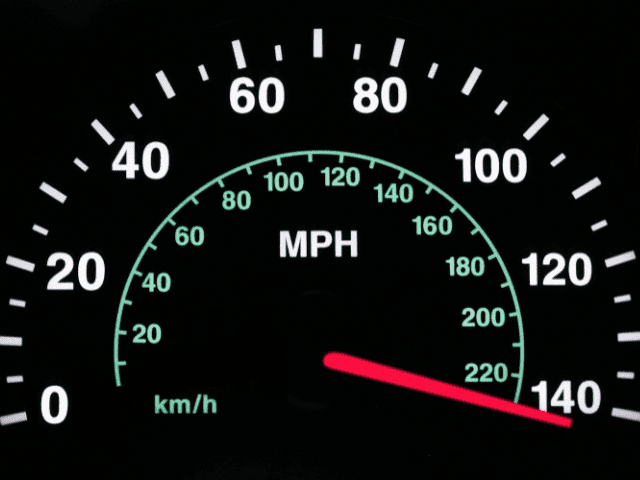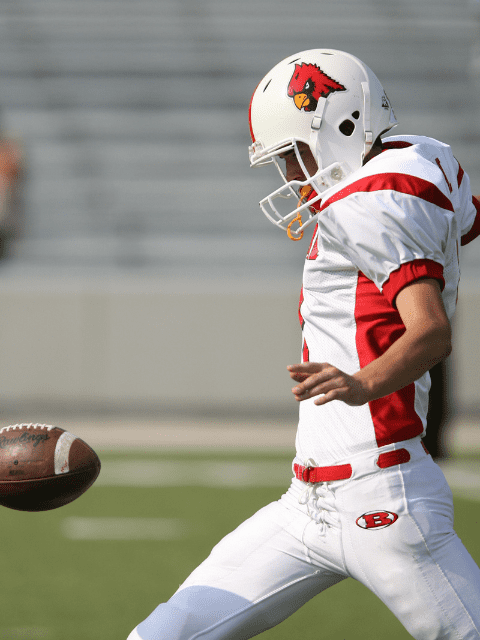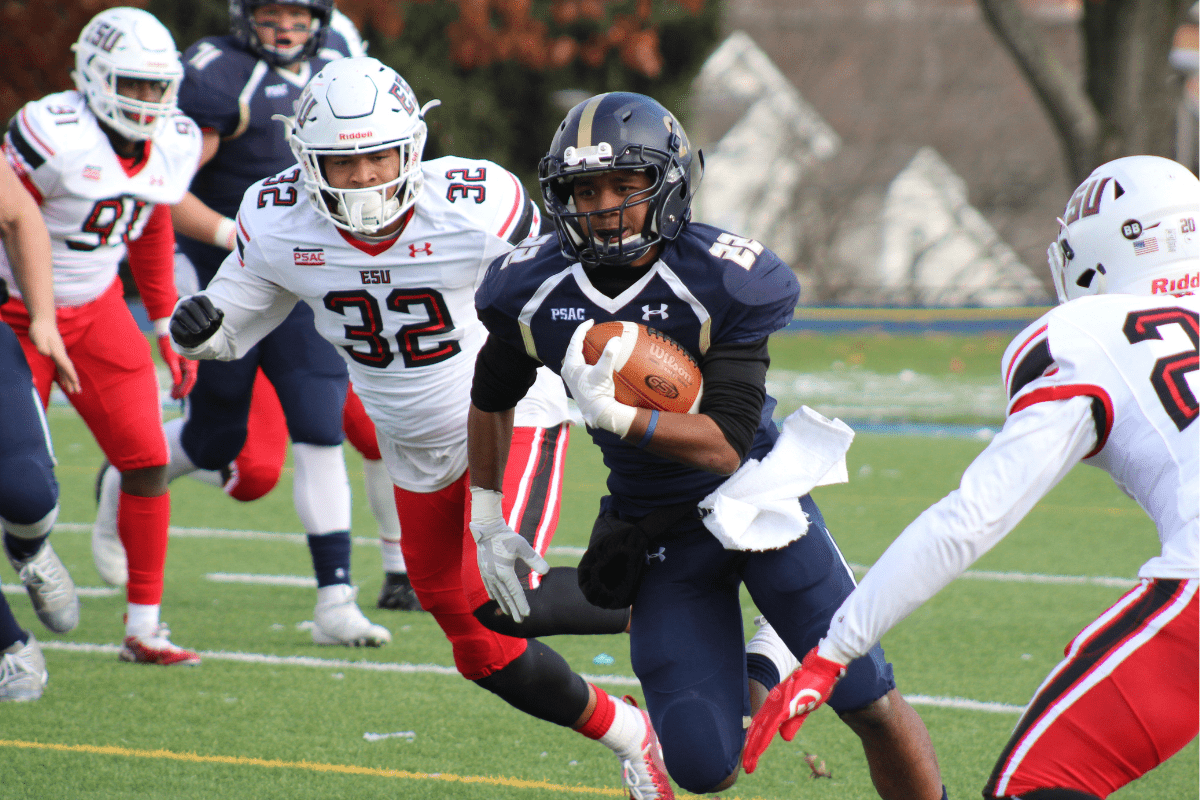Why Football Players Don’t Hit Top Speeds in Games
Sometimes sports performance professionals can overcomplicate things. I know I’ve been guilty of this myself for more than a time or two. Recently, I’ve seen theories and ideas floated around as to why football players do not achieve top speeds (their maximum velocity) in games.
I oversaw all the Catapult data (the player tracking devices that track game performance data) for three different college football programs over the past seven years and I can tell you the answer and it’s actually a simple one.
Why Players Don’t Record Top Speeds
So, what is the reason you don’t often see players running as fast as they’re able to (oftentimes not even close)?
Opportunity.
Football players rarely ever get the opportunity in a game to express their true top speed. And in some instances, hitting a top speed isn’t necessarily a good thing.
Let’s look at a few reasons why football players don’t have the opportunity to hit actual top speeds and where the few opportunities actually are (there are 3 that are extremely consistent).
How Is Top Speed Calculated?

Before we get into where players might hit top speed in a game, let’s briefly discuss how a player’s top speed is calculated.
Catapult is a unit that athletes can wear in off-season workouts, practices and games that uses GPS data to calculate speed. Data is collected after each session and each athlete’s top speed can be shown.
This is where the top speeds are coming from, but just to be clear, the number I would use for each athlete’s top speed was a little more complex.
In-Season versus Off-Season
First, there are in-season versus off-season top speeds. Comparing what a player runs during a sprint on an open field in shorts and a t-shirt isn’t comparable to what they run during practice or a game.
Assuming you’re doing true speed work in the off-season, the off-season speeds achieved will always be better than once the pads go on.

Need a Program? Check out my Free 8-Week Advanced Football Program.
Drill Work versus Game Reps
Next, I would filter out drill work versus game reps.
Let me give you an example.
We had a drill that we would do that was a kickoff drill with no kickoff return team on the field. Players would sprint down the field completely unimpeded.
This drill got extremely competitive and because players had the opportunity to run as fast as they could in a straight line for an extended distance, these reps accounted for the overwhelming majority of all the top speeds hit in the fall.
So, I had three ‘top speeds’ for each player – Off-Season. Drill Work. Game Reps.
Game Reps consisted of any period of practice (or a game) where football was being played. Scrimmages, Team Run, 7 on 7, etc.
Almost every player’s Game Rep top speed was the lowest of the three.
In-Game Opportunities Are Rare

When most people think of a player hitting a top speed in a game they probably think of an explosive offensive play. A long run or pass, most often going for a touchdown.
However, very few top speeds come from these plays.
Why?
First, a long explosive offensive play has to be just that – a long play. It takes 50 or even 60 yards to achieve true maximum velocity. This is true for any human, whether you’re a football player or an elite-level sprinter.
And there just aren’t that many 50 to 60-plus yard plays that happen in the game of football. A play like that happens maybe once per game. But, even something like a long 60-yard pass play may not result in a player hitting their max velocity.
If it’s a long throw then the timing has to be near perfection. If underthrown, even by the smallest amount, the player will have to slow down to catch the ball. They may even catch the ball ‘in stride’, but that still may require them to slow down to 20mph instead of peaking at 22mph.
Or, maybe the long pass play happens because of a busted coverage which oftentimes is the case in college football. In this instance, there is no need for the player to try to achieve top speed.
Or, maybe a 60-yard pass play was the result of a bubble screen where the receiver had to make multiple cuts and slow down to set up a few blocks to get into the open field. In this case, they probably won’t have the opportunity to achieve their top speed.
These are just a few examples of why in-game top speeds are extremely rare.
Finally, I’ll give you a couple of plays where in-game top-speed opportunities do occur.
Where Top Speeds Happen In Game
There are three plays in the course of a football game where almost all top speeds consistently happen. Yes, there is the occasional kickoff return that will break open or a pick-six that will result in a few top speeds, but those are extremely rare.
Here are where top in-game speeds happen most often:
Defender on a Long Offensive Play
Remember at the beginning of this article I mentioned that sometimes hitting a top speed may not be a good thing?
Well, that’s because almost every time a defender hit, or came close to, their true max velocity in a game over my six years was when they were chasing down a long play.
Think of the backside corner trying to run down a play that broke on the opposite sideline. He’s running unimpeded, in a straight line with a very high sense of urgency. I’ve seen top speeds happen here.
Gunners on Punt Team

In most games, our top speeds would come from one of our outside gunners on the punt team.
Again, this comes down to opportunity.
One of the teams I worked with happened to have a Ray Guy Award winner as a punter who would give our gunners plenty of distance to run. Combine that with the fact that we had some extremely fast gunners and the result was consistent top speeds.
If you want to try to take advantage of the fastest players on your team (assuming they can tackle), consider utilizing them on the punt team.
Back Side Position on Kickoff Team
This last one is a bit random and very specific.
Many kickoff return teams simply don’t block the far man away from the direction they are going to return the kickoff. This is because it’s seen as more advantageous to double-team someone at the point of attack rather than block someone that is considered very far away from the play.
This results in this position running down the field on kickoff completely unimpeded.
Opportunity.
Whoever was in this particular position would often achieve very high speeds.

Free Football Strength Program
- 8 Weeks / 4 Days per Week
- Designed for Advanced Athletes with a Solid Training Foundation
- Same Programming I Used at Schools like Univ. of Tennessee & Georgia Tech
- 100% Online. 100% FREE.
Final Thoughts
Players generally don’t hit maximum velocities in games, not because they can’t, but because the opportunities just aren’t there.
In addition to opportunity, there has to be a need as well. A receiver catching a 50 yard pass with no one around him because his defender fell down may have the opportunity but doesn’t the need to try to open up as fast as possible.
It’s not complicated. It’s actually really, really simple.

